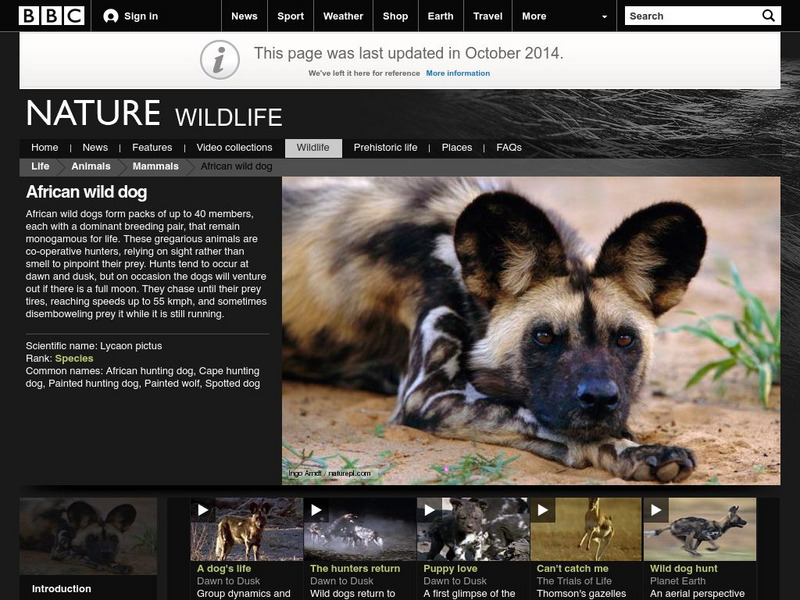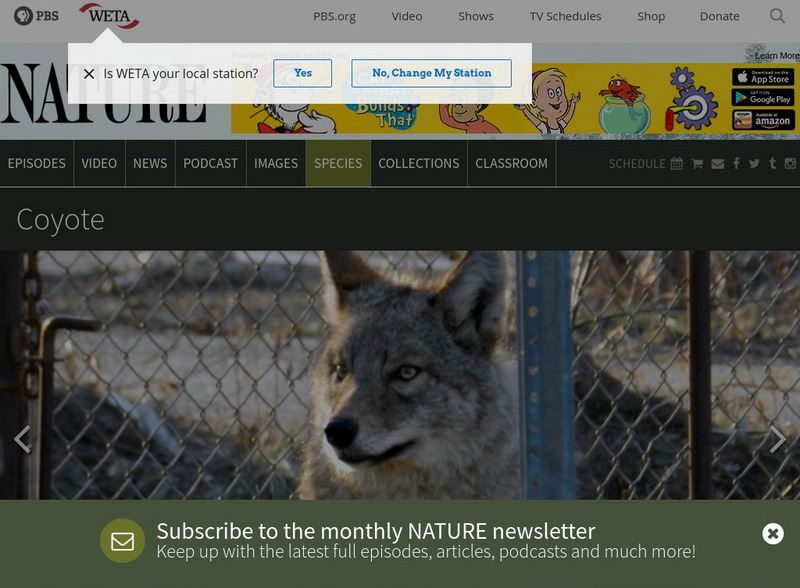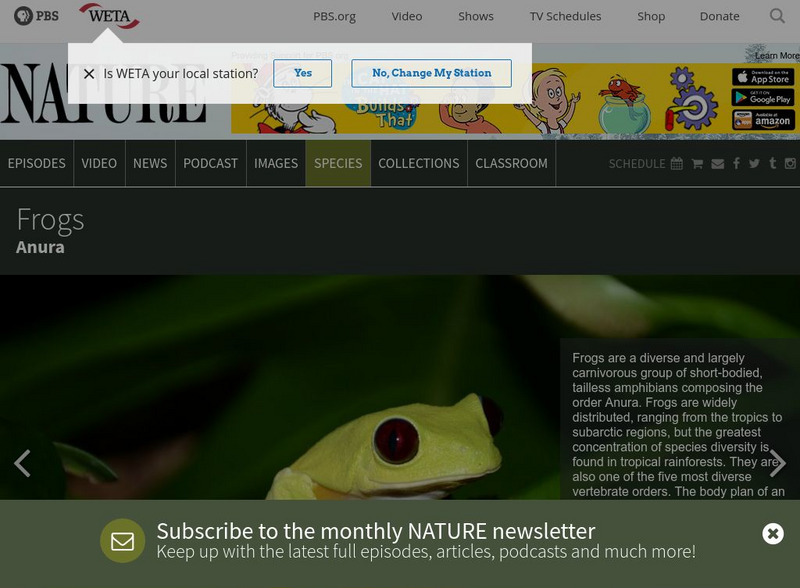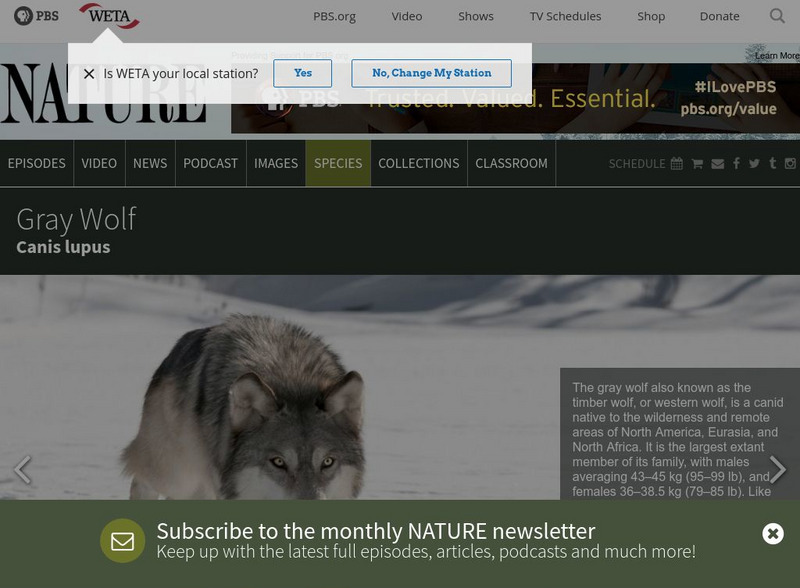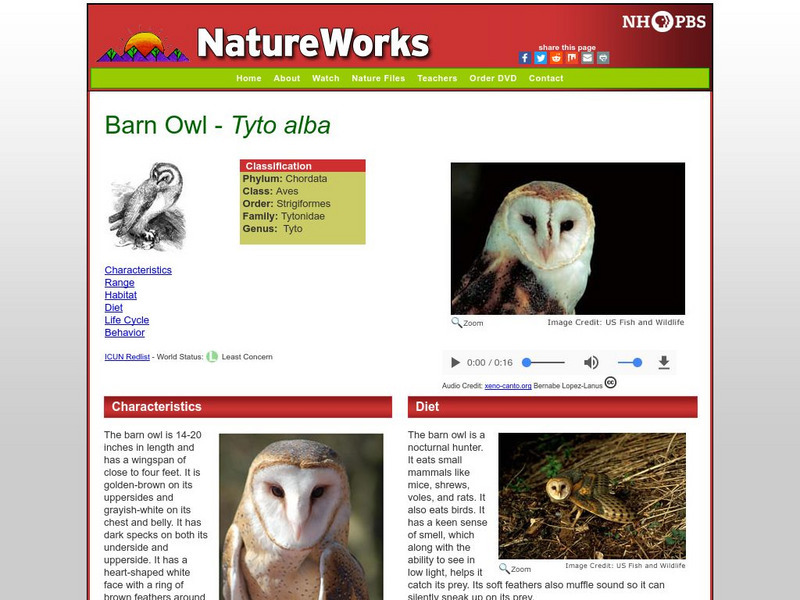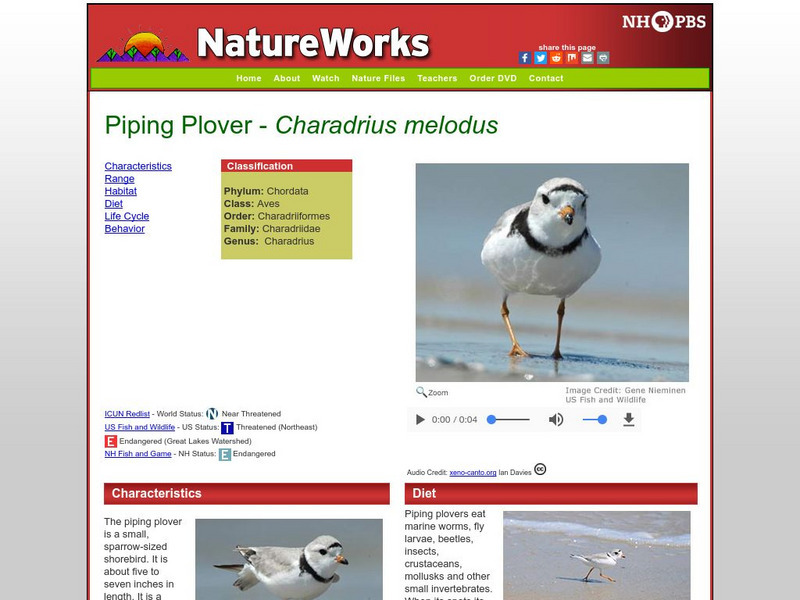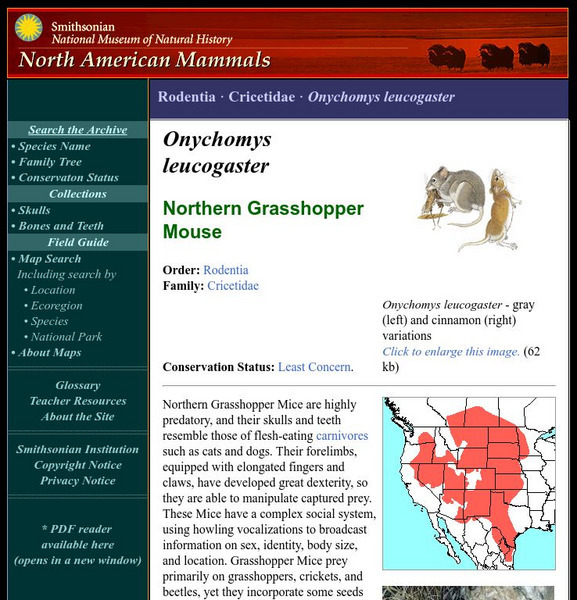Enchanted Learning
Enchanted Learning: King Cobra
Did you know that the King Cobra is the largest venomous snake? It can even kill an elephant! Find out other facts about the King Cobra including its anatomy, hunting and diet, reproduction, and classification.
BBC
Bbc Nature Wildfacts: African Wild Dog
These wild pack animals use unique individual markings to recognize each other. Read this outline of facts and look at some images to learn more.
BBC
Bbc Online: Puma, Florida Panther
At this site from BBC Online you can learn all about the Puma with this detailed fact sheet and these spectacular photos. There is also a short video of the Puma.
Museums Victoria
Melbourne Museum: Meet the Skeletons: Tarbosaurus Bataar
Tarbosaurus bataar was a large, meat-eating theropod from the Late Cretaceous Period, discovered in Mongolia. Some information and pictures can be found here.
PBS
Pbs Nature: Coyote
What do you know about coyotes? Learn more about how adaptable this animal is to new surroundings when you check out this informative resource. Explore this website to find more facts and information ranging from what these animals eat...
PBS
Pbs Nature: Frogs and Toads
Do you know how to tell the difference between a frog and a toad? This site provides interesting facts and information about this type of amphibian from where they live to what they eat and more.
PBS
Pbs Nature: Gray Wolf
Gray wolves were a frequent sight on the American plains, however, they are now an endangered species despite attempts to reintroduce them to their former habitats in the continental United States. Learn about their natural history in...
PBS
Pbs: Nature: Interactive Anatomy: Anatomy of a Cheetah
The cheetah is built for speed. Scroll over this picture of a cheetah to find out how its anatomy is functional for hunting.
PBS
Nh Pbs: Nature Works: Barn Owl
Find out more about the barn owl when you explore this educational resource. This site features information on the habitat, range, reproduction, characteristics and more of this fascinating bird of prey.
PBS
Nh Pbs: Nature Works: American Kestrel
Can you name the smallest North American falcon? The American Kestrel is the answer to this question. Learn more about this fascinating bird of prey through this resource. Students will find information on the diet, habitat,...
PBS
Nh Pbs: Nature Works: Piping Plover
What would you like to know about the Piping Plover? This site features information on this fascinating aquatic bird. The content includes characteristics, life cycle, habitat, diet, behavior and range.
CK-12 Foundation
Ck 12: Life Science: 12.17 Consumers and Decomposers
Learn the difference between consumers and decomposers in the ecosystem.
San Diego Zoo Global
San Diego Zoo: Venus Flytrap
Learn about the characteristics, cultivation, and conservation of the Venus flytrap.
Saint Louis Zoo
Saint Louis Zoo: Malayan Sun Bear
Discover fun facts and learn about the habitat, appearance, diet, and conservation status of the Malayan sun bear.
Saint Louis Zoo
Saint Louis Zoo: Spotted Hyena
Discover fun facts and learn about the behavior, diet, and appearance of the spotted hyena.
Saint Louis Zoo
Saint Louis Zoo: Red Panda
Learn animal facts about habitat, behavior, appetite, and more.
Saint Louis Zoo
Saint Louis Zoo: North American River Otter
Discover fun facts and learn about the habitat, diet, behavior, and appearance of the North American river otter.
Saint Louis Zoo
Saint Louis Zoo: Lion
Discover fun facts and learn about the habitat, diet, and conservation status of the lion.
Saint Louis Zoo
Saint Louis Zoo: Grizzly Bear
Discover fun facts and learn about the habitat, breeding, diet, and appearance of the grizzly bear.
Australian Broadcasting Corporation
Australian Broadcasting Corporation: News in Science: Sucked In! Our Galaxy Eats Neighbour
From ABC News in Science, Judy Skatssoon's article discusses evidence and research surrounding the remains of the Arcturus stream of stars, remains that suggest the possibility of the Milky Way as a carnivore galaxy.
Ducksters
Ducksters: Polar Bears for Kids: Learn About These Giant White Animals
On this website, students learn about polar bears, the largest carnivore on land. Explore how they like to swim and enjoy the cold.
Smithsonian Institution
National Museum of Natural History: American Mammals: Northern Grasshopper Mouse
Northern Grasshopper Mice are highly predatory, and their skulls and teeth resemble those of flesh-eating carnivores such as cats and dogs. Their forelimbs, equipped with elongated fingers and claws, have developed great dexterity, so...
Smithsonian Institution
National Museum of Natural History: American Mammals: Ringtail
Ringtails are nocturnal, cat-sized carnivores. They are good climbers and are found in habitats that range from dry canyons to wet woodlands, in highland and lowland terrain. Learn more about the Bassariscus astutus, more commonly known...
Smithsonian Institution
National Museum of Natural History: American Mammals: Red Fox
Red foxes are the most widely distributed wild carnivores in the world, occurring in North America, Asia, Europe, and North Africa. They are also widespread in Australia, where they were introduced in about 1850 so that fox-hunters would...
Other popular searches
- Carnivore +Herbivore(teeth)
- Herbivores Carnivores
- Carnivore Herbivore
- Omnivore Herbivore Carnivore
- Producers and Carnivores
- Herbivores and Carnivores
- Herbivore and Carnivore
- Herbivores. Carnivores
- Herbivore Carnivore Teeth
- Carnivores Omnivore Herbivores

